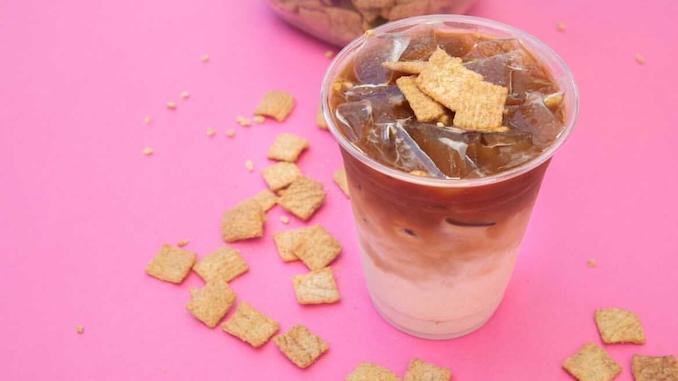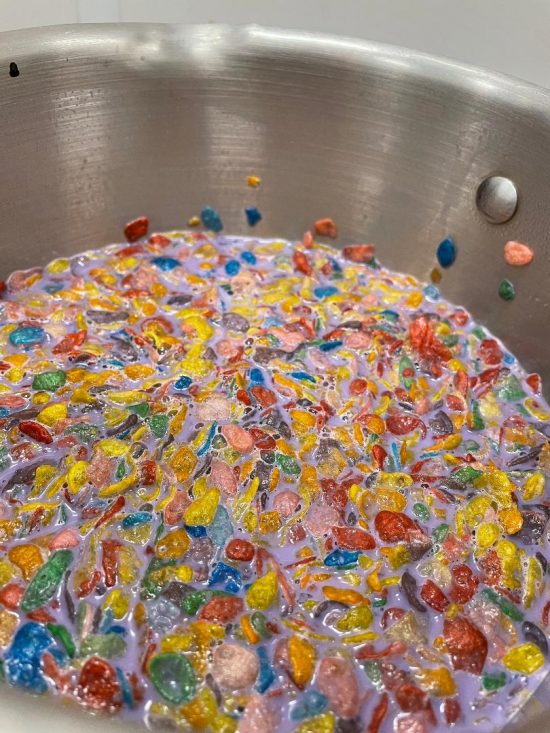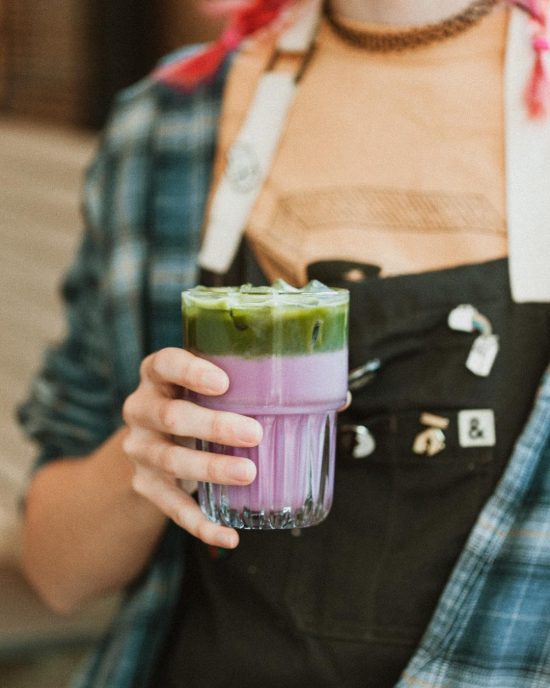
We explore how cereal found its way into both milk and coffee.
BY MIRANDA HANEY
SPECIAL TO BARISTA MAGAZINE ONLINE
Cover photo courtesy of Chitchat
In a rushed attempt to crank out a summer seasonal menu for Greater Goods Coffee, where I work as a barista trainer, I infused some milk with Fruity Pebbles cereal. It was by no means an original thought; I was inspired by a similar drink I saw at another café in Austin, Texas. We added some ube extract to put our own spin on it, called it the Ube Pebbles, and launched the menu.

A couple of weeks later, I started seeing similar drinks everywhere. Cereal milk lattes are popping up like mushrooms on café menus across North America. Why now? And what brilliant mastermind could I credit with the inception of such a delightful trend?
After some sleepless nights and hard-hitting investigative journalism, I believe I have finally uncovered the true lineage of the cereal milk latte.
The origins of cereal
To properly explore where the cereal milk latte came from, we must first briefly discuss the bizarre origin story of the main character: cereal.
It was first developed in 1863 by James Caleb Jackson, then was revamped a few years later by John Harvey Kellogg. Both men were devout Seventh-day Adventists who believed their flavorless, grain-based granolas could cure common ailments such as indigestion, intemperance, and masturbation.
In the early 1900s, Kellogg’s younger brother and business partner Will suggested they add sugar to make the cereal even more popular, but the older Kellogg resisted. Eventually Will won the battle of Battle Creek, bought the rights to Corn Flakes, and went on to build the multinational Kellogg Company.
While Jackson and J.H. Kellogg faded into the seldom-visited Wikipedia pages of history, breakfast cereal made headlines. By the ‘70s and ‘80s it was virtually unrecognizable from its primordial form, with heaps of delicious processed sugars, charismatic mascots, and bright neon boxes with prizes inside. It only fell out of fashion in the 2000s, when Americans became more health-conscious and less interested in dessert for breakfast. The cereal starlets of the past have since been permanently relegated to the shelves next to the Pop-Tarts, reserved for nostalgic millennials, Rice Krispie treats, and of course, the occasional barista.

Milk Bar madness
For many, the mother of cereal milk is two-time James Beard award-winner Christina Tosi. With support from Momofuku’s David Chang, Christina opened the first Milk Bar location in the East Village in November 2008, her trademarked Cereal Milk front and center.
The original recipe consists of toasted Corn Flakes steeped in whole milk, strained, then discarded. She saves the leftover sweet and salty liquid and uses it to make a variety of cookies, cakes, and soft-serve ice cream. As J.H. Kellogg rolled in his grave, New Yorkers lost their minds.
Milk Bar officially added a cereal milk latte to their in-store menu in 2018. I personally found it hard to believe that such a thing didn’t already exist by that point. Here is where the plot thickens.
Tune in tomorrow to read about cereal milk’s detailed history in the specialty-coffee world.

ABOUT THE AUTHOR
Miranda Haney (she/her) is a coffee educator, freelance writer, and musician based in Austin, Texas. She’s currently working as the head trainer and events coordinator for Greater Goods Coffee. Miranda was a contestant on The Barista League: Online Season 2 and a competitor at the 2019 U.S. Barista Championship in Costa Mesa, Calif. When she’s not doing coffee things, she’s probably running a marathon (or something crazy like that).

